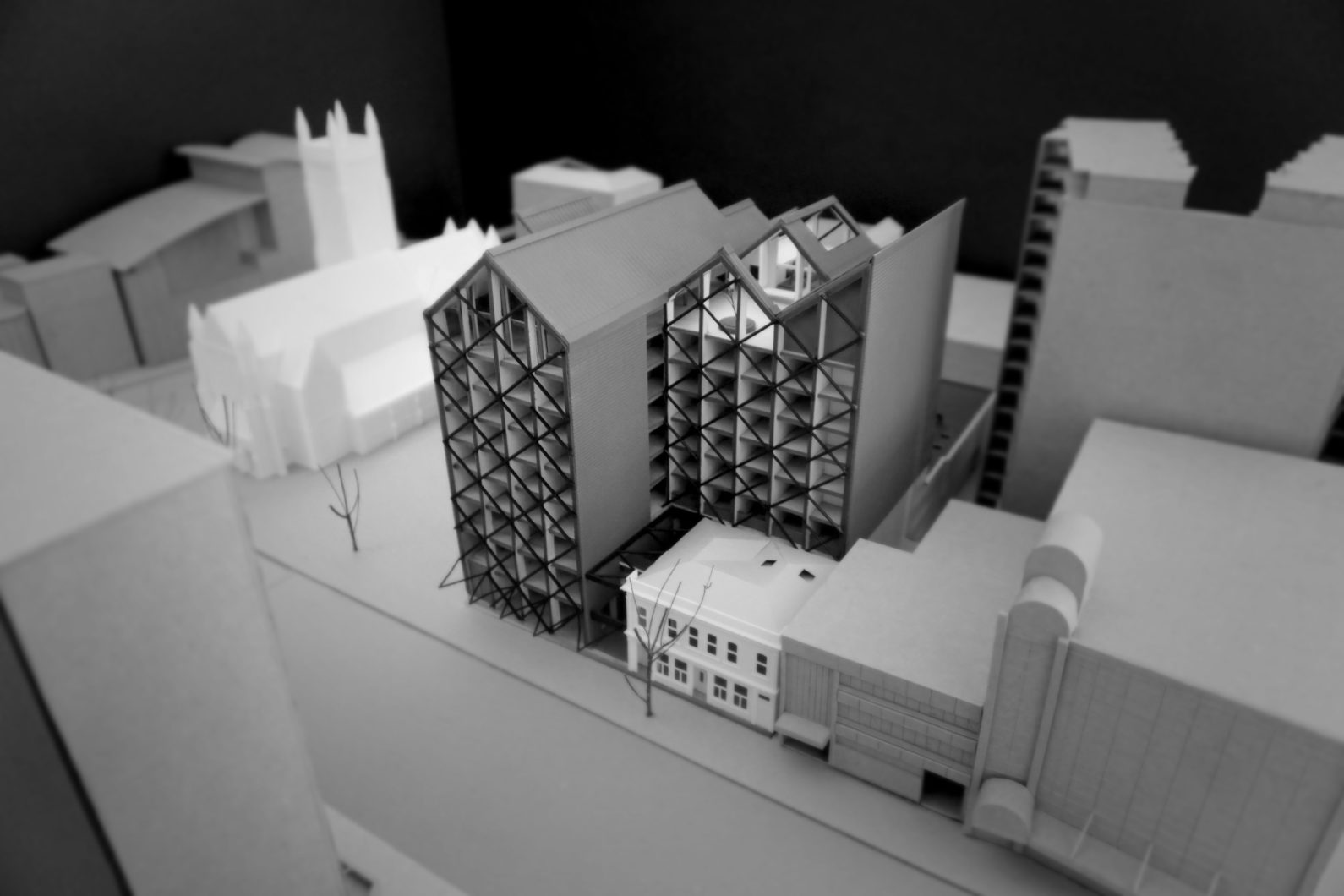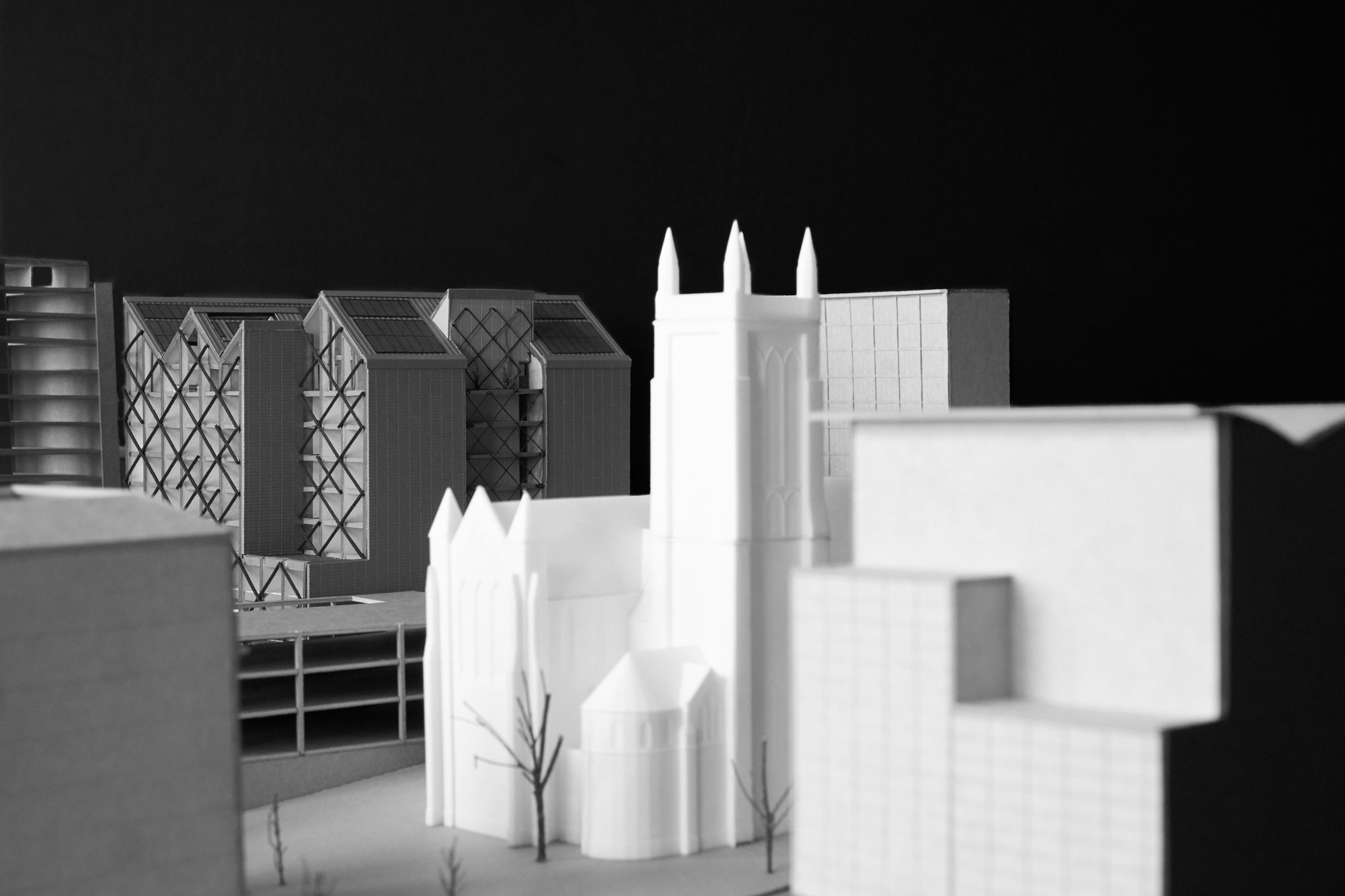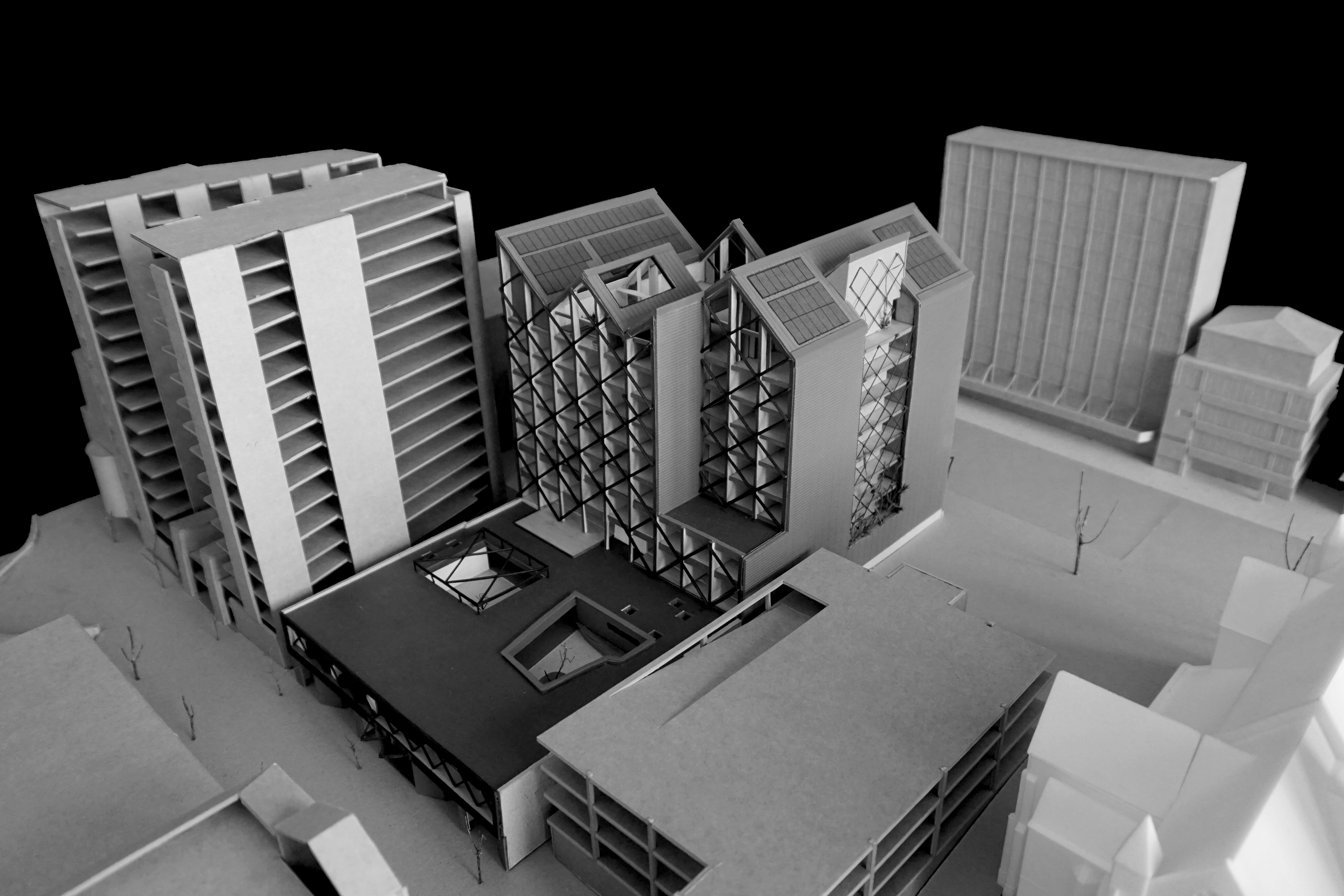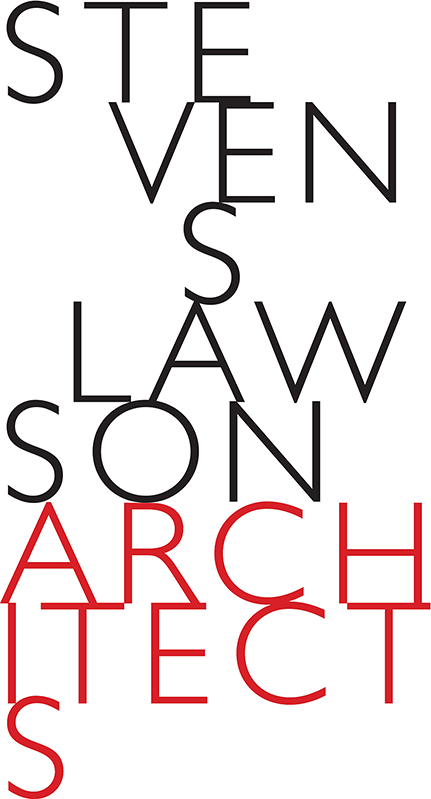HomeGround is a visionary social services and supportive living facility; one of the most comprehensive of its kind in the world. Operating across multiple social, cultural and ecological measures, this project embodies manaakitanga and kaitiakitanga, and has achieved 80% less embodied carbon in its construction over a 60 year life.
With a vision to end chronic homelessness in central Auckland, Auckland City Mission – Te Tāpui Atawhai has opened HomeGround, a centre for integrated health and community services alongside residential accommodation. Stevens Lawson Architects started on this journey with the City Mission and mana whenua in 2006, working with the Breaking Ground principles, a supportive housing model developed in New York City in the 1990s. By bringing permanent housing, wraparound care, and addiction support together on the same site, Auckland City Mission is able to substantially reduce homelessness in the community in a sustainable way.
On the high-profile Hobson Street site, three low-rise buildings have been removed to allow for site intensification and maximum buildable area. Spanning the motorway feeder that is Hobson Street to the quiet, mixed-use Federal Street, HomeGround is embedded into its urban context. Wide public entrances, a laneway, and a retail edge on Federal Street connect the building into the city, reinforcing the City Mission’s values of ‘housing for all’.
The principles that have guided the design of HomeGround align strongly with the philosophy of the Living Building Challenge (LBC) – creating spaces that are socially just, culturally rich and ecologically restorative. The LBC is acknowledged as being the most strenuous building certification in the world, and HomeGround delivers on many of its principles.[1]
Social: A supportive housing model
The facility spans 12,500 sqm, encompassing a new eleven-storey tower, a podium, and a restored heritage building. Significantly, the City Mission can now offer permanent accommodation with 80 studio and one-bedroom apartments for chronically homeless people and people on the social housing register. Apartments are small yet self-contained, with access to a range of communal spaces and private outdoor terraces made safe for people living with trauma.
The combination of accommodation and support services ensures the City Mission team can respond to people in an integrated and holistic way. Facilities include a commercial kitchen and community dining room, public showers and toilets, a public medical centre and pharmacy, addiction withdrawal services, activity spaces (for art, carving, music and drama classes and workshops for the homeless community and residents), a rooftop garden and a sacred space. The on-site healthcare centre, catering for up to 3,000 patients, is open to Mission clients as well as nearby residents and city workers.
In addition to private areas for clients and residents, the building has rentable public spaces to bring in additional revenue, including conference facilities and community enterprise spaces.
Biophilic design principles are embedded instinctively, beginning with the building’s conceptual foundations in place, culture and whakapapa to the use of natural light, greenery and outdoor space.
As a ‘home for all’, HomeGround is safe, secure, warm and equitable physically and socially. Spatial legibility and cognition are important features for any human environment, yet even more so for people suffering from trauma, health issues or addiction. HomeGround features spaces that are carefully calibrated for an experience of nurture and protection, discovery and delight. This is care-informed architecture, where every element – from the entry experience to the door hardware – is designed to provide safety and promote recovery.
Cultural: An expression of context and programme
The project narrative developed by mana whenua Ngāti Whātua Ōrākei is founded on the idea ‘Finding your way back home’. From here, a co-development process led by Graham Tipene (Ngāti Whātua, Ngāti Kahu, Ngāti Hine, Ngāti Haua, Ngāti Manu) produced a set of Te Aranga Design principles specific to the project, supported by City Mission staff and client groups. In response, Māori whakaaro and tikanga are in place throughout the building in a meaningful and tangible way.
The story of people, place and purpose has led to a symbolic yet pragmatic building. Gabled roof forms evoke the image of a large house – a place of shelter and care for people who find themselves out of home. Roof angles align with those of the adjacent St Matthew-in-the-City Anglican church to form an empathetic relationship and connection between the two iconic institutions. The crowning gables also suggest a wharenui, the diagonal bracing evoking patterns from Māori weaving, tukutuku and Pacific tapa.
Material selections of timber, brick and terracotta on the exterior and in the public spaces are robust yet friendly and welcoming, reinforcing the building’s purpose and cultural narrative with an earthy materiality. The architecture throughout makes generous use of natural light, cultivating a feeling of warmth and space through its palette of muted colours, natural materials and organic shapes.
A large number of the Auckland City Mission’s clients are of Māori or Pasifika descent, and the development of the design reflects and respects this connection, aiming to provide a sense of identity and manaakitanga. A whānau room, Te Manawa Ora, provides a sacred space to acknowledge and celebrate Māori tikanga; artwork and installations integrated throughout create a sense of home, healing and belonging to support the client’s journey.
Cultural symbols, artefacts and artworks enrich the interior, beginning with a mauri stone embedded into the laneway floor and a manea stone prominently placed within the laneway. Murals created by Graham Tipene and John Reynolds feature in each of the five accommodation floors and are based on Tipene’s overarching concept of the healing powers of the natural world. Broader Māori concepts of healing and nurture are expressed in Tipene’s window film designs and native plantings throughout the building, including rooftop gardens planted with traditional medicinal and food species
Ecological: Innovation in design and construction
In addition to its visionary social agenda, HomeGround’s major innovation is the use of mass timber construction. Cross-laminated timber (CLT) is the main structural system for the building, including stair and lift cores, making HomeGround the tallest structural timber building in New Zealand. The timber structure is supported by a concrete and steel podium and basement, and uses exterior steel dia-grid cross-braces for lateral stability. Utilising off-site manufacturing and standardisation, these technologies provide a lightweight, prefabricated response to an inner-city site to minimise the building’s embodied energy, structural depths, construction time and onsite labour.
An independent third-party review has assessed the design and construction of HomeGround against both Greenstar Design and As Built Vs 1.0, Homestar Vs 5.0, as well as the Living Building Challenge (LBC).
A lifecycle assessment (LCA) analysis of the primary building envelope, using BRANZ LCA Quick, indicates an 80% reduction in carbon over a 60 year life compared with a reference building of standard steel/concrete construction insulated to the New Zealand Building Code. HomeGround achieves a total embodied carbon footprint of 129 kgCO2e/m2 compared to a reference building carbon footprint of 638 kgCO2e/m2. In addition, the refurbishment of the Prince of Wales heritage building, including salvaged materials, reduces the embodied carbon impact of the primary building by 6.8%.
Other environmental strategies include a sort-at-source waste management system and rainwater harvesting. Access to natural daylight and the use of robust, non-toxic and locally sourced materials encourage a healthy interior environment for residents and staff. The thermal envelope alone provides a 66% improvement on current Building Code Approved Document H1 minimum requirements.
Passive design utilising overhangs, high-performance glazing, natural ventilation and high thermal envelope efficiency removes the need for air conditioning in the residential spaces, while maintaining good levels of thermal comfort, indoor air quality and acoustic attenuation from external noise sources.
The integration of vertical planting, urban rooftop food production and a greenhouse brings green space to the city while enhancing human well-being. Human-powered transportation is supported with bicycle facilities, e-bike and e-car charging, as well as a bicycle sharing scheme for all staff and residents.
The vision of the Auckland City Mission is for sustained social change and ultimately the end of chronic homelessness in central Auckland; HomeGround is conceived and executed as a landmark in the city that advances this kaupapa / purpose. Culturally appropriate in its design and configuration, and constructed according to sustainable ecological principles, it symbolises that having a home is a right for every member of society.
Contact Stevens Lawson Architects to find out more about the HomeGround project.
[1] Tricia Love Consulting, HomeGround Sustainability Review Report (2022).



